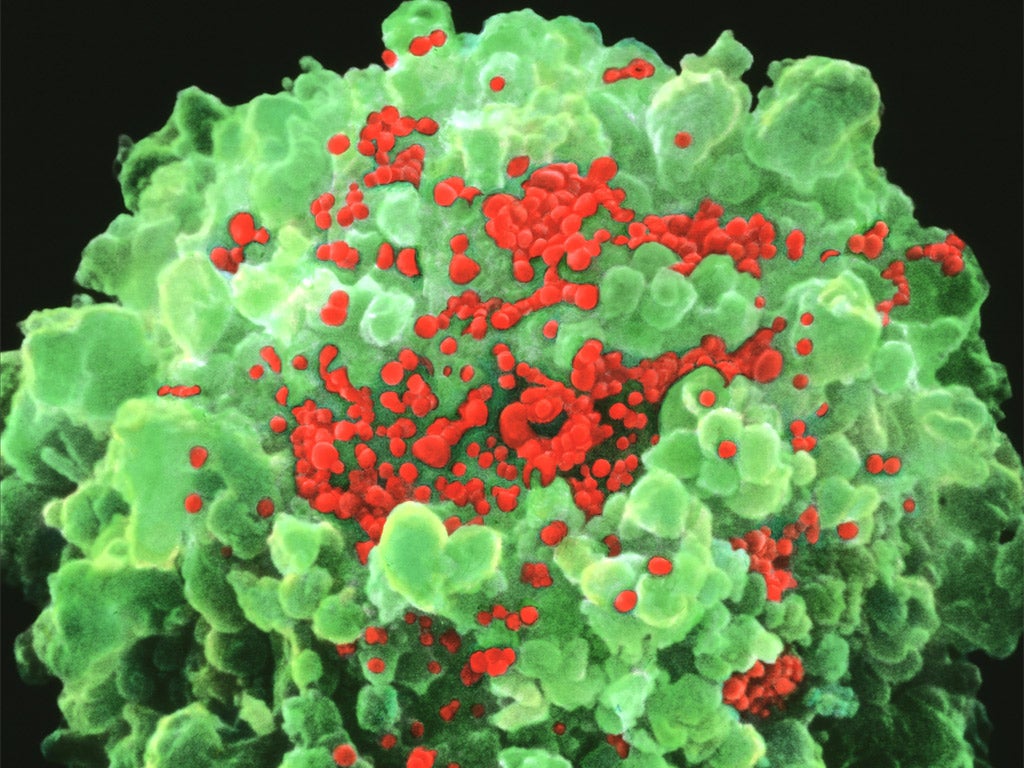Two HIV-infected men treated with bone marrow transplants 'have no detectable Aids virus'
One patient has now been off anti-retroviral drug treatment for 15 weeks and the other for seven weeks

Two men infected with HIV for many years have been able to stop taking anti-viral drugs following bone-marrow transplants without any detectable Aids virus in their bodies, scientists have announced.
A range of highly sensitive tests have failed to detect HIV in either man, suggesting that the transplanted immune systems of the patients may have been able to clear the viral "reservoir" of HIV from their bodies.
UPDATE 12 December 2013:
The findings point to a possible "functional" cure for Aids based on the eradication of HIV from a patient's cells. However, the scientists emphasised that it is still too early to say whether the patients have been truly cured of HIV as the virus may still return.
A number of previous studies have suggested that it may be possible to eradicate HIV completely from a patient's body based on transfusions of bone marrow stem cells, which replace the white blood cells that the Aids virus attacks.
Until recently, scientists thought that it would not be possible to cure someone of HIV as the virus integrates its genetic material into the DNA of the patient, where it can lie dormant for many years even in the presence of anti-viral drugs.
Both patients were taking anti-retroviral drugs prior to and during the period when they underwent the bone-marrow transplants to treat cancer but this was withdrawn when doctors realised that their HIV had fallen to undetectable levels.
One patient has been repeatedly tested for HIV for nearly 4 months following his withdrawal from antiviral therapy with no signs of the virus returning. The second patient shows no signs of being infected with HIV seven weeks after stopping his drug treatment.
"So far to date, we cannot detect virus in peripheral blood, we cannot detect virus integrated into the cells of the patients," said Dr Timothy Henrich of the Brigham and Women's Cancer Centre in Boston, who led the study released at the International Aids Society conference in Kuala Lumpur, Malaysia.
"I want to stress that longer term follow-up is going to be needed to understand the full impact of stem-cell [bone marrow] transplantation….It is possible that the virus could come back in a few months from now, or it's possible that it could take one or two years for the virus to return to these patients," Dr Henrich said.
"Even with a large reduction in the HIV reservoir, you could still potentially have rebound. So we will don't know the full implications of the findings," he said.
The two Boston patients were given bone marrow transplants from donors who were susceptible to HIV infection. This differs from the case of the "Berlin patient", an American gay man called Timothy Brown who received a bone marrow transplant from a donor carrying a mutation that appears to confer a type of immunity to HIV.
Dr Henrich said that although the findings are interesting, bone marrow transplants are not practical for the vast majority of people with HIV. Not only it is costly, but it is potentially dangerous, with a mortality rate of 20 per cent for cancer patients, he said.
SCIENTISTS TALKING OF 'FUNCTIONAL CURE'
A cure for Aids was once thought to be impossible given that HIV is able to hide away within the cells of the body, lying dormant for many years, and possibly a lifetime, even when the bloodstream is swamped with a powerful cocktail of antiretroviral drugs.
However, scientists are now talking of something called a "functional cure". In other words, it may be possible to prevent HIV from re-emerging by some clever trick based on tinkering with a patient's immune system.
Timothy Brown, the co-called Berlin patient, became HIV free following a bone-marrow transplant to treat cancer. His marrow donor appears to have passed on a genetic resistance to HIV infection.
A baby in Mississippi, infected during birth, also seems to have shrugged off the virus, as have a group of patients in France known as the Visconti cohort. Now two patients in Boston appear to have become HIV free following bone-marrow transplants from a donor who, unlike Mr Brown's donor, is susceptible to HIV infection.
What these cases show is that there may just be an alternative approach to long-term antiretroviral drugs. It is early days, but a functional HIV cure may just be possible.
Join our commenting forum
Join thought-provoking conversations, follow other Independent readers and see their replies
Comments